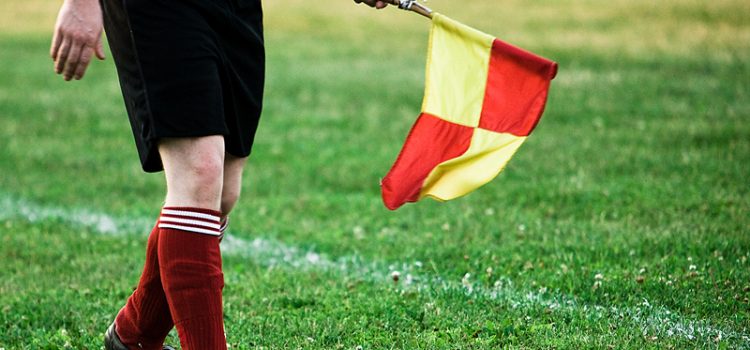Football, otherwise known as ‘the beautiful game’, may seem simple on the outside but as its future becomes more technologically orientated with the introduction of goal-line technology, more and more of its traditional rules are starting to be questioned, none more so than the renowned offside rule.
What Is It?
This rule is brought up consistently on football programmes such as Match Of The Day and Sky Sports News as it continues to play such a massive part in the game and is still a strong catalyst for controversy.
The rule was brought into play to stop attacking players from wandering up the field to stand next to the opponent’s goal-keeper, waiting for a ball to float into them so they could score an easy goal. The rule requires attackers to time their runs and passes to perfection as well as requiring defenders to operate as a solid defensive unit.
A football player is offside if he is in the opponent’s half of the pitch and is positioned nearer the opponent’s goal line than either the football or the second last opposition defender. You cannot be offside if you are level with the second last defender, the last two defenders or the ball and you cannot be offside if you’re not involved in active play, which is where much of the confusion arrives.
Active Interference
One of the bigger questions an official has to ask themselves when giving an offside decision is whether or not there is a player in an offside position interfering with play. The linesman can easily spot whether or not the attacker has breached the last line of defence and flag for offside but if a player is not interfering with play, then no offside will be flagged.
A player does not have to touch the ball to be interfering with play. That’s an important aspect to remember as it encapsulates a few factors. If a player is blocking off a defender from an offside position, disabling them from defending or by blocking off a keeper’s vision, then they count as offside.
If a shot comes in from a player who is onside and it rebounds off the keeper or the post to a player who was offside when the ball was fired in, then the linesman will flag as the player has retained an advantage from being in an illegal position.
Other Situations
The offside rule does not come into play during certain set pieces. For example, a player may use a throw-in without having to worry about the rule as it will not count for offside. The same can be said for both goal-kicks and corner-kicks, with the offside rule not coming into play until the ball has been played at least once.
When the player appears to be level with the second last defender, the decision has to be whether or not the attacker’s ball-playing body parts are beyond that defender. A player can use any part of their body except their arms to control the ball so if any parts, save for the arms, are beyond the last defender, they will be offside.
It’s not a difficult rule to understand essentially. The goalkeeper counts as a defender so the rule dictates that the attacker must not be beyond the second last defender (the goalkeeper counting as the first defender) and players are only offside if they’re interfering directly or indirectly with play.
The result of an offside is an indirect free-kick to the opposition, taking place from where the offside offence occurred.
Featured images:
- License: Creative Commons image source
Brad Chambers is a keen sportsman and blogger for Sealskinz.com, a leading UK retailer of thermal sports gloves and socks. Brad enjoys football skiing and climbing and can be followed on here on twitter.
Please like O-Posts on Facebook
You can follow O-Posts on Twitter @OPosts

